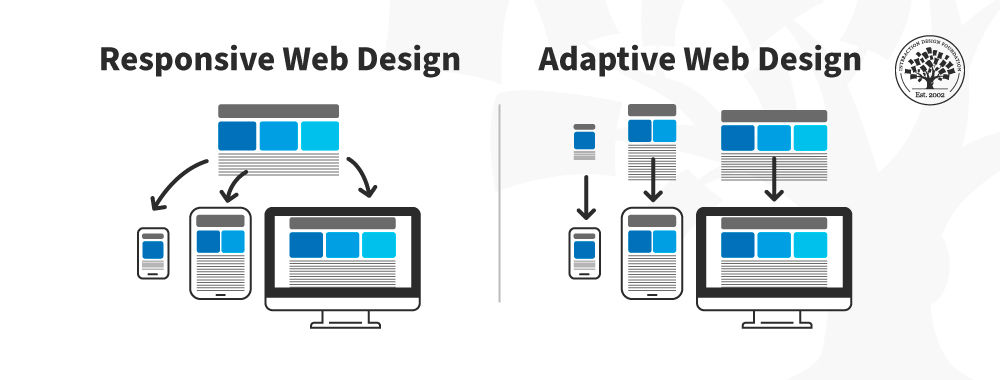Exploring the Influence of Responsive Website Design on Accessibility and Individual Fulfillment Throughout Different Instruments
The introduction of receptive web style (RWD) has changed the digital landscape, especially in boosting ease of access and individual fulfillment across a wide range of tools. By using flexible designs and flexible interfaces, RWD not only accommodates varied customer demands but likewise resolves the important importance of inclusivity in web experiences. As we take a look at the nuanced interaction in between RWD, mobile website traffic, and user involvement, it comes to be important to think about exactly how these aspects jointly affect overall website efficiency. What ramifications does this have for future style methods and individual assumptions?
Meaning of Responsive Website Design

The core concept of RWD is to supply an ideal watching experience, which consists of easy reading and navigation without the need for excessive resizing or scrolling. This adaptability is essential in a digital landscape where customers access info with numerous gadgets with varying display resolutions. RWD not just improves functionality but also improves lots times, as it generally employs a solitary codebase to offer several devices, decreasing the need for different mobile websites.
Eventually, Responsive Internet Style aims to create a natural and appealing individual experience, ensuring that material is visually enticing and functionally efficient, regardless of the tool being utilized. This adaptability is crucial in fulfilling the diverse needs these days's web users, cultivating interaction and complete satisfaction throughout platforms.
Significance of Accessibility
Just how can we ensure that all customers, regardless of their capacities, can involve with internet content properly? Availability in website design is of vital significance, as it cultivates inclusivity and makes sure equivalent access to info for people with specials needs. This encompasses visual, acoustic, and cognitive impairments, needing developers to consider diverse user requirements.

By focusing on access, companies not only follow lawful demands yet likewise boost their brand credibility, showing a commitment to social obligation. Easily accessible internet sites typically result in boosted usability for all customers, as functions made for inclusivity can benefit a broader audience.
Inevitably, the importance of availability goes beyond plain conformity; it has to do with developing an electronic environment where every user can navigate, comprehend, and engage with content efficiently, thus enhancing the general web experience for everybody.

User Fulfillment Across Instruments
Lots of customers expect a smooth experience when Get More Info accessing web content throughout various gadgets, from desktop computers to smartphones. This assumption is rooted in the increasing diversity of gadgets and display sizes offered today. Receptive internet design (RWD) plays a critical role in satisfying these expectations by making sure that web sites adjust fluidly to different display screen environments.
Individual complete satisfaction is dramatically influenced by the ease of access and use of an internet site. When users can easily navigate, check out, and connect with content no matter the gadget they are utilizing, their general contentment rises. A well-implemented receptive layout minimizes the need for zooming or horizontal scrolling, which can lead and discourage customers to greater bounce prices.
As customers involve with content that is customized to their gadget, they are a lot more likely to spend time on the website, return for future gos to, and suggest it to others. Ultimately, receptive internet design cultivates a positive relationship in between users and web material across devices.

Influence On Mobile Users
Over 54% of global web traffic currently stems from mobile devices, highlighting the crucial significance of maximizing internet experiences for this user base. Responsive web style (RWD) plays a pivotal function in boosting access and customer complete satisfaction for mobile customers. By adapting format, pictures, and performances to different screen dimensions, RWD guarantees that web content is not only visually enticing however additionally easily accessible, no matter the device utilized.
The influence of RWD on mobile users prolongs past aesthetic appeals; it dramatically influences functionality. A properly designed receptive site decreases the need for excessive scrolling and zooming, facilitating an extra instinctive interaction. In addition, it promotes inclusivity by fitting customers with varying capabilities, making sure that those that count on mobile phones can access info easily.
Furthermore, mobile individuals profit from much faster filling times, as RWD maximizes sources based upon tool abilities - web design. This efficiency is critical, as mobile users often seek quick details and might desert websites that fall short to fill without delay. Inevitably, the assimilation of receptive internet style is essential for meeting the varied requirements of mobile individuals, enhancing their overall experience and motivating ongoing discover here involvement with the web content
Finest Practices for Application
Carrying out responsive website design (RWD) effectively calls for adherence to a number of best practices that ensure optimum performance across tools. Initially, utilizing a fluid grid format is crucial; this enables elements to resize proportionally based upon the display dimensions, giving a seamless experience. Furthermore, utilizing adaptable pictures ensures that visuals range properly without shedding high quality or causing format problems.
Following, executing media questions recommended you read is vital for applying various designs based on tool qualities. These questions allow developers to tailor the customer experience for specific resolutions, improving use and access. Additionally, focusing on mobile-first style can bring about better efficiency by originally focusing on the tiniest screens and considerably enhancing the experience for larger tools.
Making certain that all interactive components are touch-friendly and maximizing page load times significantly add to customer contentment and access. By adhering to these best techniques, companies can create a obtainable and robust web presence that fulfills the varied needs of individuals across different gadgets. web design.
Verdict
Finally, receptive website design plays an essential duty in improving ease of access and user complete satisfaction across varied devices. By applying versatile grids, images, and media queries, RWD helps with a smooth customer experience, particularly for people with impairments. As mobile use remains to increase, the fostering of RWD becomes vital for delivering aesthetically enticing and functionally effective websites. Eventually, the integration of finest practices in responsive layout fosters inclusivity, minimizes bounce prices, and promotes better user involvement.
The emergence of responsive web layout (RWD) has transformed the digital landscape, especially in improving access and user complete satisfaction across a plethora of devices.Responsive Web Design (RWD) transforms the user experience across different gadgets by making sure that internet material adapts fluidly to various display dimensions and alignments. Inevitably, receptive internet style promotes a favorable partnership in between individuals and web content across devices.
Over 54% of worldwide web traffic now originates from mobile devices, highlighting the important relevance of maximizing internet experiences for this individual base. Responsive web design (RWD) plays a critical role in enhancing access and customer contentment for mobile individuals.